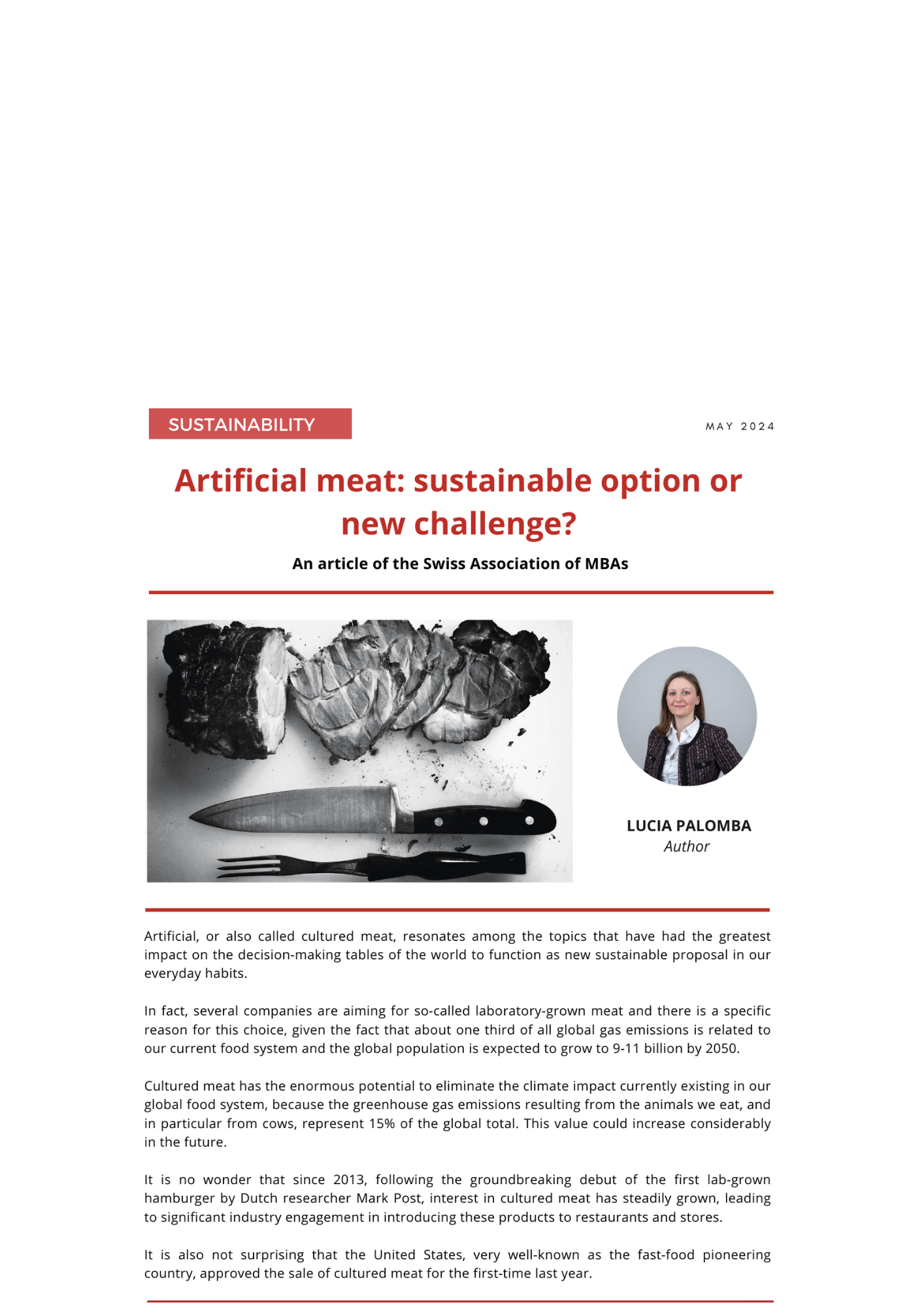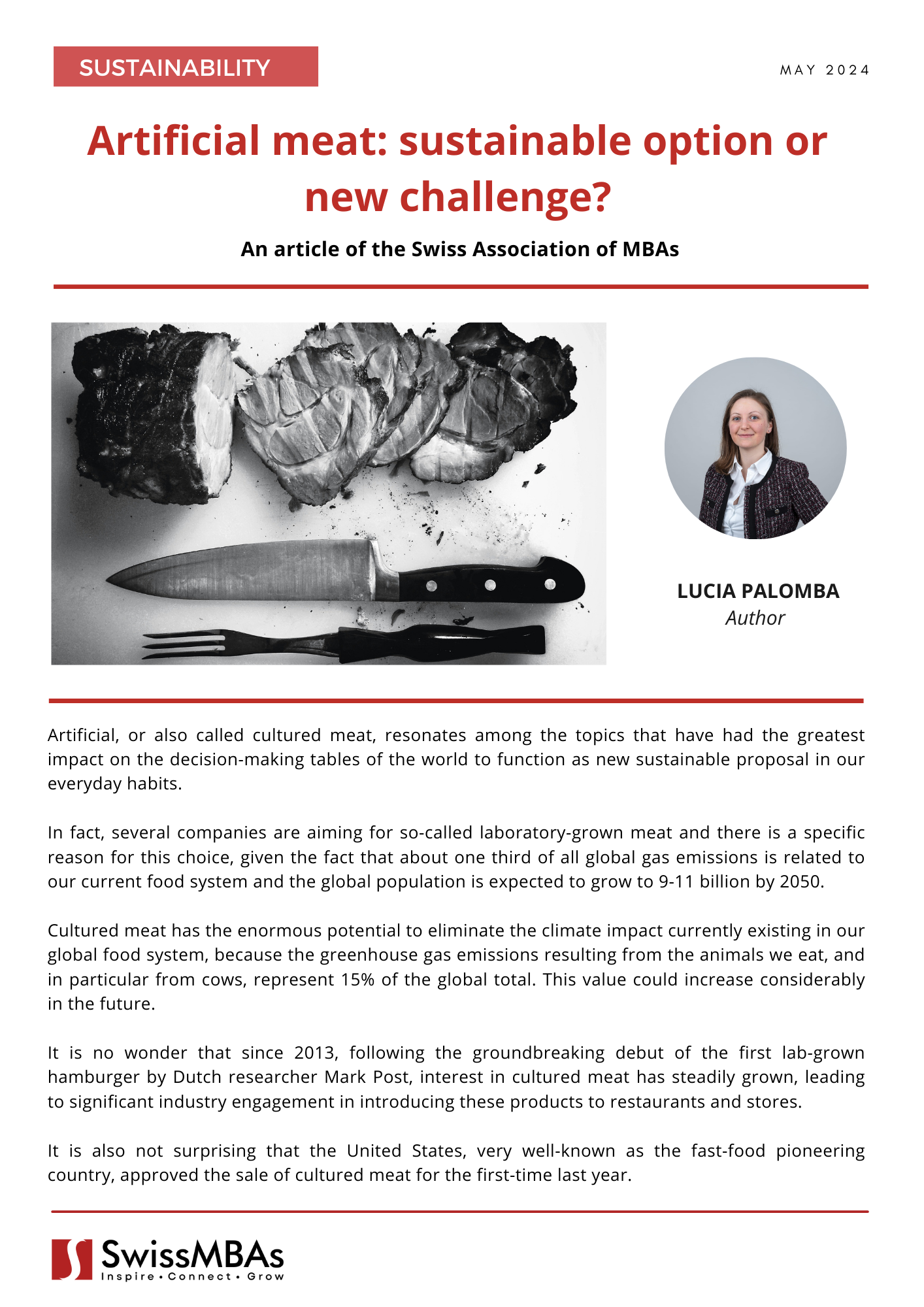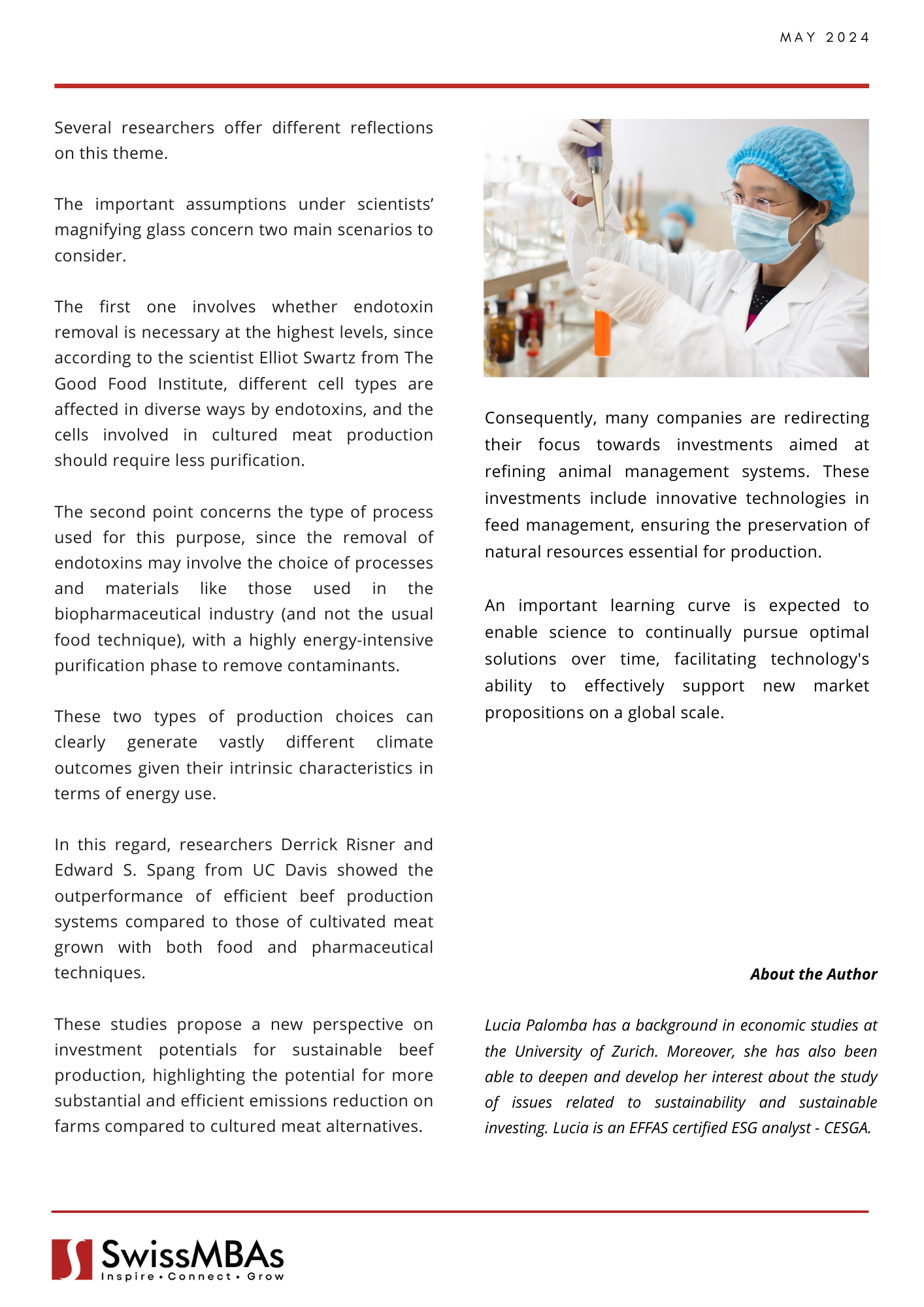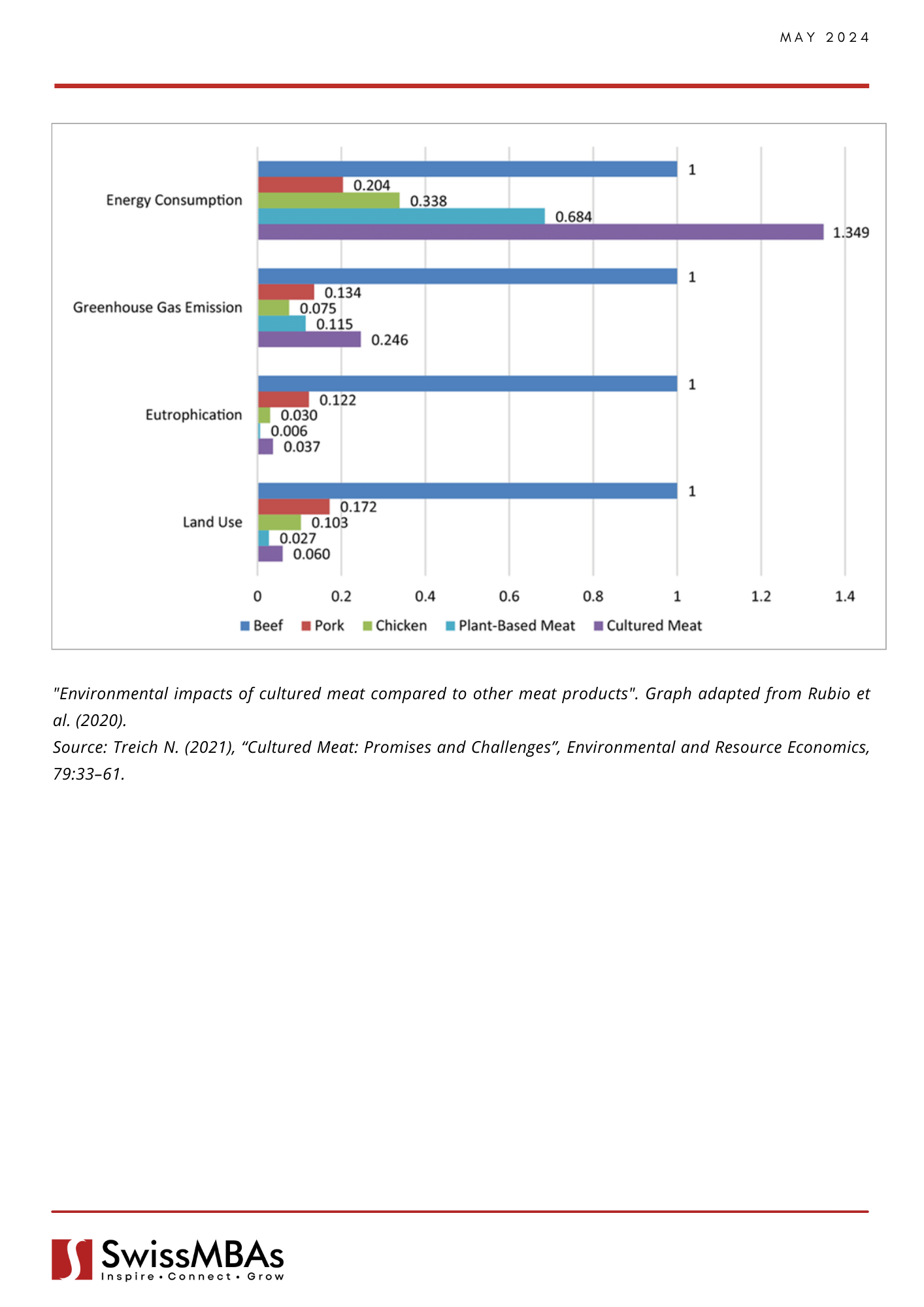
Artificial, or also called cultured meat, resonates among the topics that have had the greatest impact on the decision-making tables of the world to function as new sustainable proposal in our everyday habits.
In fact, several companies are aiming for so-called laboratory-grown meat and there is a specific reason for this choice, given the fact that about one third of all global gas emissions is related to our current food system and the global population is expected to grow to 9-11 billion by 2050.
Cultured meat has the enormous potential to eliminate the climate impact currently existing in our global food system, because the greenhouse gas emissions resulting from the animals we eat, and in particular from cows, represent 15% of the global total. This value could increase considerably in the future.
It is no wonder that since 2013, following the groundbreaking debut of the first lab-grown hamburger by Dutch researcher Mark Post, interest in cultured meat has steadily grown, leading to significant industry engagement in introducing these products to restaurants and stores.
It is also not surprising that the United States, very well-known as the fast-food pioneering country , approved the sale of cultured meat for the first time last year.
A win-win situation, right? However, it is still essential to delve into all the factors which can better enable us to establish whether the conditions for generating the expected sustainable impact actually exist.
This article aims to offer some reflections in this regard, also because we have seen that cultured meat represents a hotly debated topic, particularly as Novel Food in the EU territory, by the scientific community, the legislators and also by the civil society.
Whether from news sources or through a trip to a farm, we understand that livestock farming contributes significantly to emissions due to the extensive land and energy required for animal nutrition and growth. These factors contribute substantially to carbon dioxide emissions. Specifically, animals, and in particular cows, produce significant amounts of methane during digestion. Globally, it is estimated that producing one kilogram of beef can result in emissions equivalent to around 100 kilograms of carbon dioxide.
The advent of cultured meat appears to offer a tangible solution to this issue without altering the fundamental qualities of the meat we know. Cultivated meat, at the cellular level, is composed of the same meat we are used to, but is derived from a tissue sample obtained from a young animal, after which cells are isolated and start growing in a reactor.
However, precisely because of this complex process, numerous researchers have been reflecting on the actual potential for energy savings resulting from this choice, as there could be a significant impact on emissions even in this case.
While cultured meat presents a promising alternative, it still has its emissions footprint. Firstly, emissions are generated through the supply chain required for cell nutrition and growth, and secondly from the reactors where cells are stationed during the growth phase. These reactors, along with associated tubes and equipment in production plants, often contribute emissions that are challenging to mitigate. It remains uncertain whether renewable energy will be adopted for these purposes in the future.
The belief that materials utilized in cultured meat production necessitate pharmaceutical-grade ingredients and stringent purification processes to mitigate contamination risks has sparked disagreement among international experts in the last year. One important example of contamination refers to the endotoxins, a type of contamination that poses significant challenges in biopharmaceutical processes. In fact, despite being present in minuscule amounts, endotoxins can generally cause considerable damage to cell growth and require thorough removal measures.
Several researchers offer different reflections on this theme.
The important assumptions under scientists’ magnifying glass concern two main scenarios to consider. The first one involves whether endotoxin removal is necessary at the highest levels, since according to the scientist Elliot Swartz from The Good Food Institute, different cell types are affected in diverse ways by endotoxins, and the cells involved in cultured meat production should require less purification. The second point concerns the type of process used for this purpose, since the removal of endotoxins may involve the choice of processes and materials like those used in the biopharmaceutical industry (and not the usual food technique), with a highly energy-intensive purification phase to remove contaminants.
These two types of production choices can clearly generate vastly different climate outcomes given their intrinsic characteristics in terms of energy use.
In this regard, researchers Derrick Risner and Edward S. Spang from UC Davis showed the outperformance of efficient beef production systems compared to those of cultivated meat grown with both food and pharmaceutical techniques.
These studies propose a new perspective on investment potentials for sustainable beef production, highlighting the potential for more substantial and efficient emissions reduction on farms compared to cultured meat alternatives. Consequently, many companies are redirecting their focus towards investments aimed at refining animal management systems. These investments include innovative technologies in feed management, ensuring the preservation of natural resources essential for production.
An important learning curve is expected to enable science to continually pursue optimal solutions over time, facilitating technology's ability to effectively support new market propositions on a global scale.
"Environmental impacts of cultured meat compared to other meat products". Graph adapted from Rubio et al. (2020).
Source: Treich N. (2021), “Cultured Meat: Promises and Challenges”, Environmental and Resource Economics, 79:33–61.







